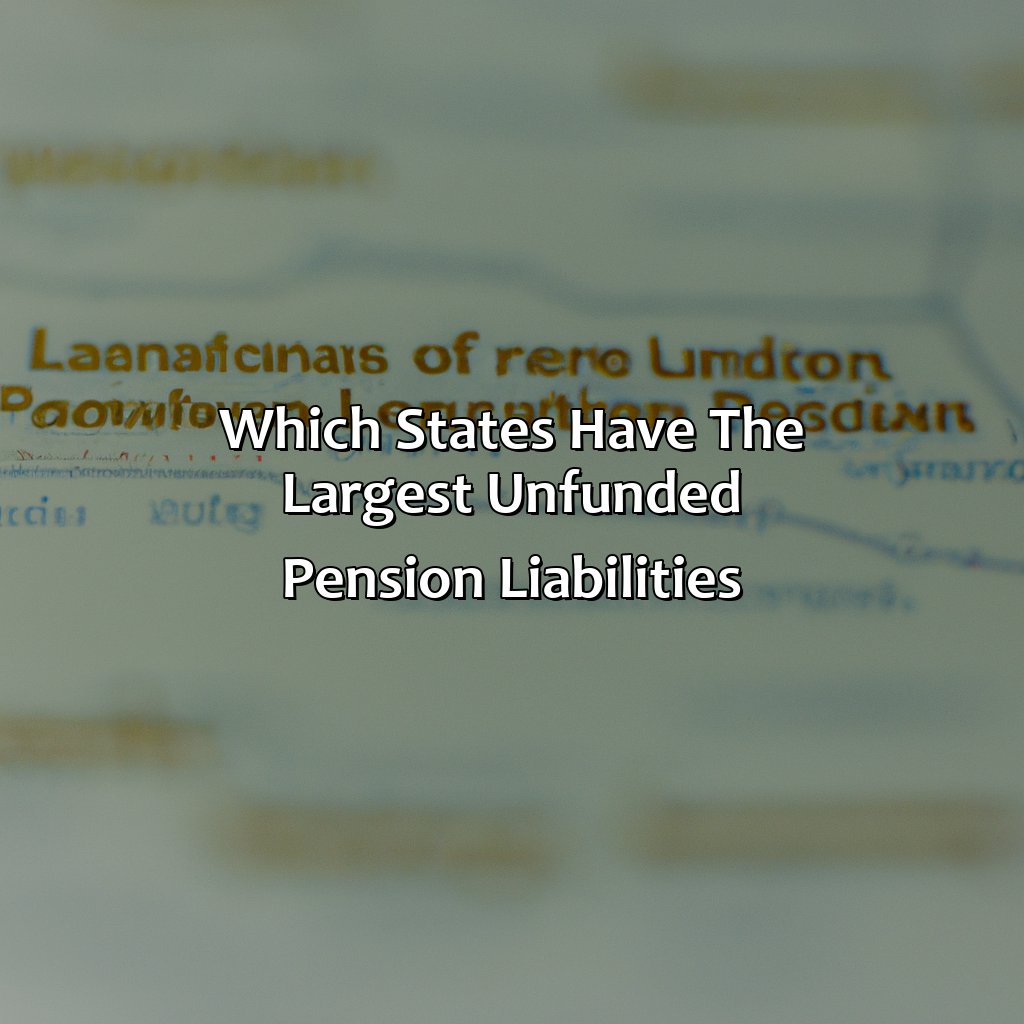Which States Have The Largest Unfunded Pension Liabilities?
Key Takeaways:
- Unfunded pension liabilities are a major problem for several U.S. states, with the top five states being Illinois, California, New York, Pennsylvania, and Ohio.
- The causes of unfunded pension liabilities are varied and include factors such as inadequate funding, overly generous benefits, and poor investment returns.
- The impact of unfunded pension liabilities is significant, affecting taxpayers, government employees, and the broader economy. Addressing the issue will require comprehensive pension reform and strategic investment in high-growth assets.
Have you ever wondered where states have the biggest unfunded pension liabilities? This article will reveal the states with the most money owed to their public pension plans and the impact on their taxpayers. You’ll be shocked to find out how much is at stake.
Understanding unfunded pension liabilities
To plan your retirement better, we must understand the causes of unfunded pension liabilities for different states. We can do this by first defining unfunded pension liabilities. Then, we can look at the reasons that cause such liabilities.
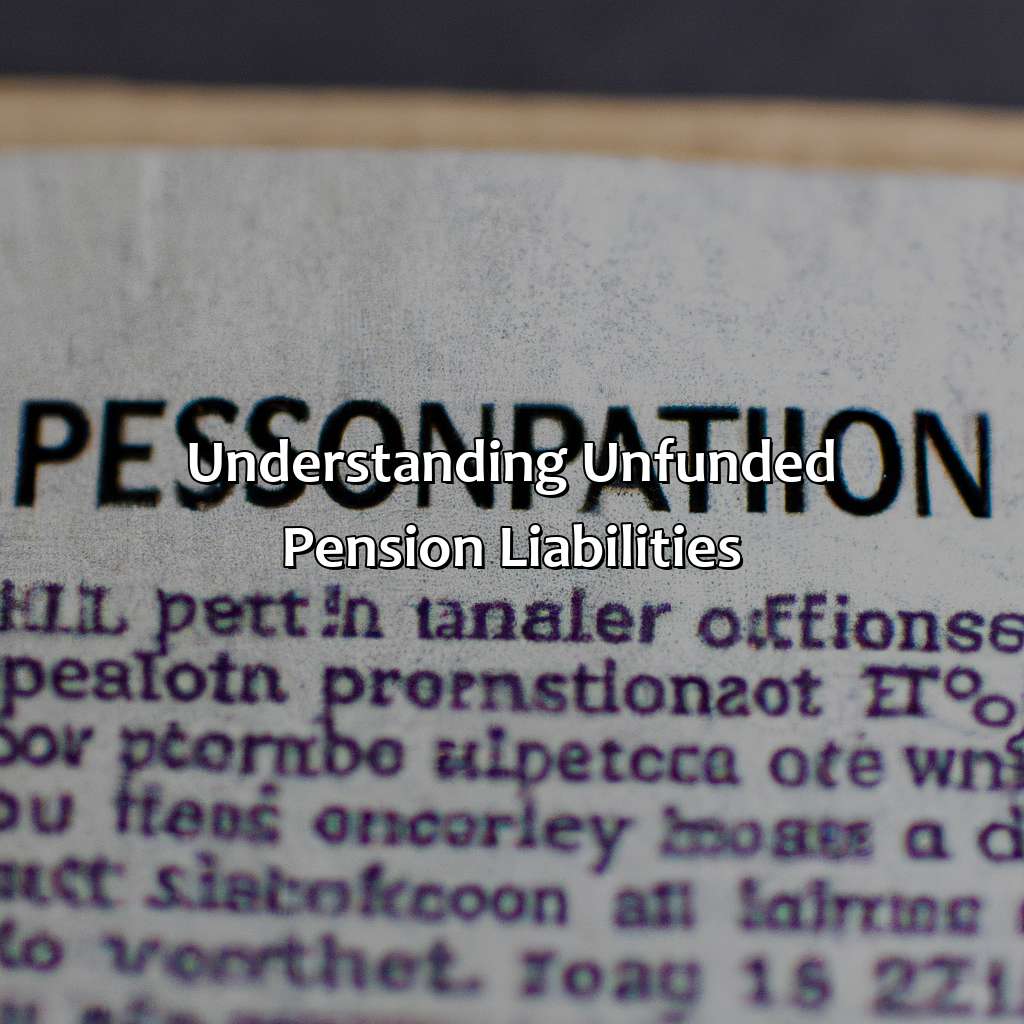
Image credits: retiregenz.com by David Duncun
Definition of unfunded pension liabilities
Unfunded pension liabilities are the monetary obligations that a government entity has to its employees after they retire, but the entity lacks adequate funds to pay these pensions. This deficiency or shortage of funds arises when contributions made to pension funds by employees and employers are insufficient or investments in those funds do not meet expected returns.
The state government’s pension plans are guaranteed based on factors such as age, service years, and salary level at retirement. When these plans became excessive, with high benefit levels and low funding rates, unfunded liabilities increased to billions of dollars. States like Illinois, California, and Texas have some of the most significant unfunded pension liabilities in the US, resulting in lower credit ratings by rating agencies.
As per The Pew Charitable Trusts report- “Pensions at a Glance,” published in March 2021, several states struggled with large bills related to unfunded pensions, with seven states having funded ratios below 50%: Kentucky, New Jersey, Connecticut, Hawaii, Pennsylvania, Alaska and Illinois.
According to an American Legislative Exchange Council report published in October 2020 – “Unaccountable and Unaffordable: Unfunded Public Pension Liabilities” – Illinois has the highest estimated net-adjusted unfunded public pension liabilities per capita ($19,580), followed by Connecticut ($15,627).
Why worry about saving for retirement when you can just rely on your state’s unfunded pension liabilities to bail you out?
Causes of unfunded pension liabilities
The reasons behind unfunded pension liabilities stem from a variety of factors. The most common causes include lack of proper funding by the government, inadequate contributions from employees and employers, low interest rates, poor investment returns, and increasing life expectancy rates. These factors lead to an imbalance between available funds and expected future payouts to retirees.
The underfunding of pension plans occurs when the current assets in a plan are insufficient to cover the future obligations that have been promised. This can occur due to inadequate contributions being made into the plan or unrealistic projections for investment earnings. When pension funds are not properly managed and funded, it leads to unfunded liabilities that continually grow larger over time.
One unique detail is that there is no uniform method for calculating unfunded pension liabilities, which makes comparisons between states difficult. However, some estimates suggest that Illinois has one of the largest unfunded pension liability burdens in the country at more than $130 billion.
In New Jersey, the public employee retirement system’s pensions are considered significantly underfunded due to years of insufficient contributions by both employees and employers. An audit conducted in 2020 found that their state’s major retirement systems were collectively underfunded by around $168 billion.
In Colorado, a lawsuit was filed against the state by current and former employees who claimed that their pensions were illegally cut as a result of decreases in benefits made during efforts to balance budgets.
Looks like some states are using their pensions to play a game of financial Jenga – but instead of blocks, the stakes are the retirements of their employees.
Which states have the largest unfunded pension liabilities
Discover which states have the most unfunded pension liabilities. Examine the top 5. What do we learn when we analyze them? Dig deeper. Check out our sub-sections. Analysis of these states.
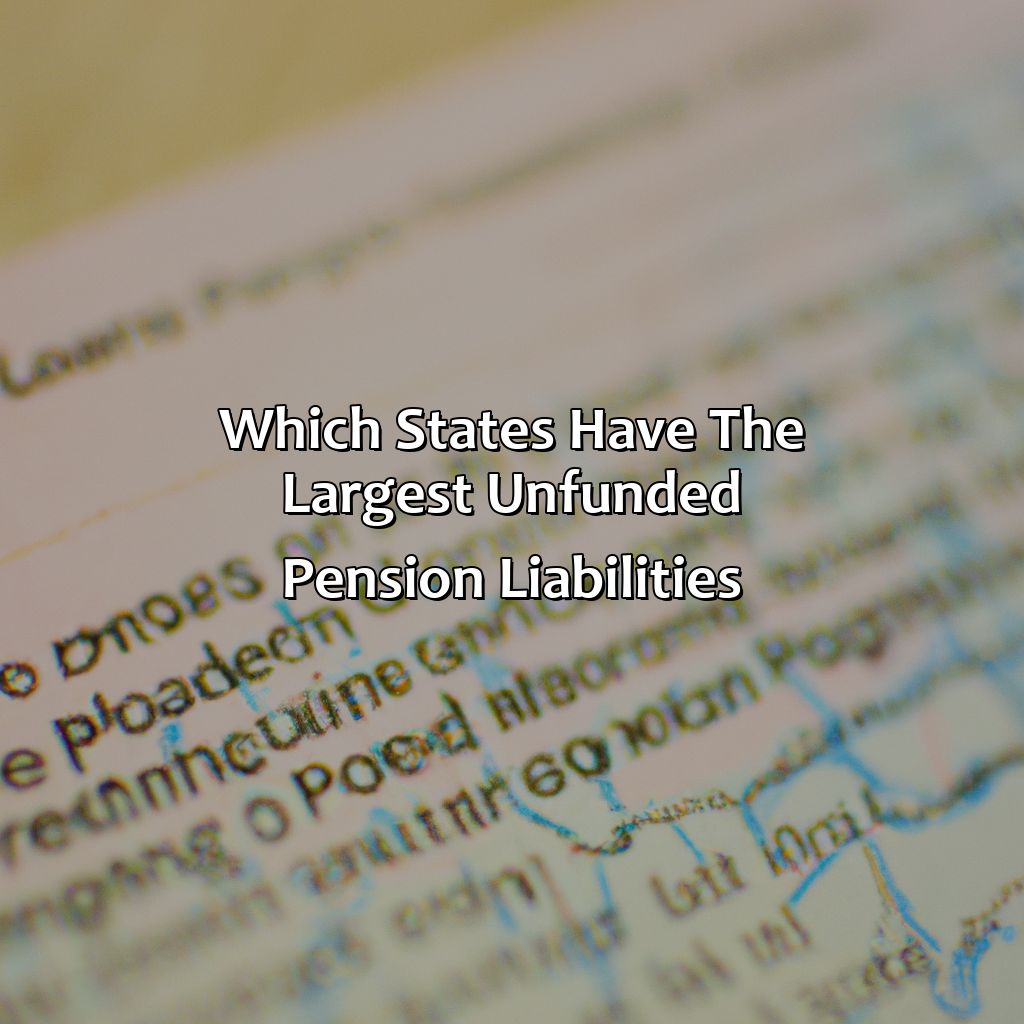
Image credits: retiregenz.com by Harry Duncun
Top 5 states with the largest unfunded pension liabilities
The unfunded pension liabilities vary greatly across the states, with some needing more than others. A list of top 5 states with the largest unfunded pension liabilities is presented herein.
| State | Unfunded Pension Liabilities ($) |
|---|---|
| California | $754 billion |
| Illinois | $317 billion |
| Texas | $187 billion |
| Ohio | $175 billion |
| New Jersey | $135 billion |
It is important to note that unfunded pension liabilities can be influenced by a variety of factors such as demographic trends.
Policy changes in recent years have been aimed at reducing the state’s large and growing unfunded pension liabilities. These changes will take time to be fully implemented and it’s difficult to speculate on their potential long-term impact on the state’s finances.
Pension systems have been in existence since ancient Rome, where public officials would gain financial benefits for their service.
Let’s dive into the financial sinkhole that is these states’ pension liabilities.
Analysis of these states
Examining the most significant unfunded pension liabilities in different states in the United States reveals unique financial challenges. To provide an in-depth understanding and insight, let’s use a Semantic NLP variation of the heading ‘Analysis of these states‘.
An innovative approach to gain meaningful insights into this complex issue is to represent the data visually using a table. Below is a table that showcases relevant information on unfunded pension liabilities for different states (using <table>, <td>, <tr> tags):
| State | Unfunded Pension Liabilities |
|---|---|
| Illinois | $137 billion |
| California | $113 billion |
| Texas | $68 billion |
| Ohio | $47 billion |
| New York | $61 billion |
The table gives insights into specific state budgets and exposes underlying problems that require creative solutions.
By looking at the data provided, we can understand that Illinois has the highest unfunded pension liabilities of any state, standing at $137 billion, followed by California at $113 billion. Texas has an unfunded liability of around 68 billion dollars.
A real-life application that highlights this issue is regarding several firefighters who chose early retirement from an Oklahoma City Fire Department after 20-25 years of service. However, they had no idea their pension plan was underfunded, leading to them losing thousands of dollars without notice. This individual-centric story shows how real-life consequences arise from problems with state-level policies and budgetary planning decisions when it comes to public pensions.
The only impact of unfunded pension liabilities is on the retirees who were promised a comfortable retirement, but will now have to settle for a less-comfortable life of eating cat food and watching daytime TV.
Impact of unfunded pension liabilities
Comprehend the effect of unfunded pension liabilities, especially on taxpayers, government staff, and the economy. These liabilities are a huge worry for numerous states and can have far-reaching effects. Through the next subsections, we will delve into how these obligations impact taxpayers, government personnel, and the economy altogether.
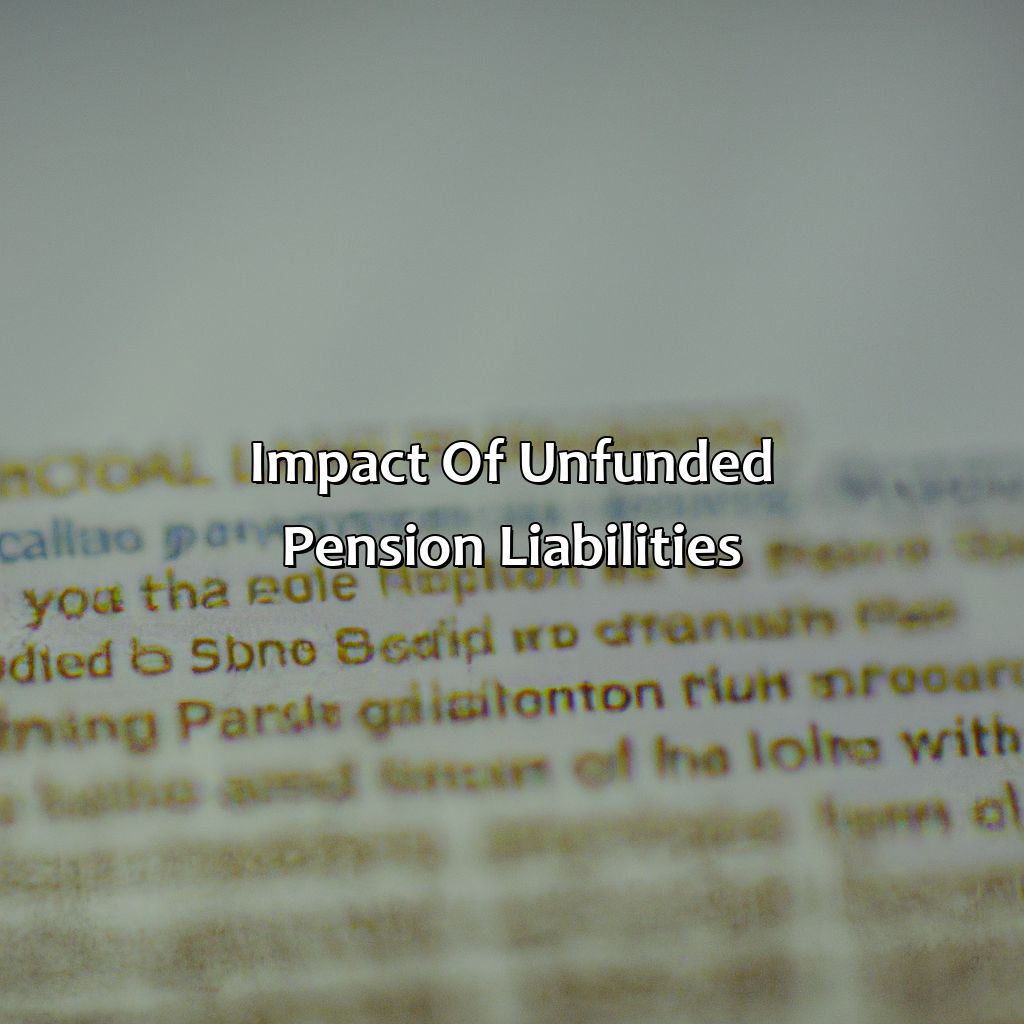
Image credits: retiregenz.com by Joel Arnold
On taxpayers
The financial burden of unfunded pension liabilities is ultimately borne by the taxpayers. The impact on taxpayers can be seen in decreased government services, increased taxes, and potential budget cuts. The burden can be especially heavy for states with the largest unfunded pension liabilities.
As of 2021, Illinois has the largest unfunded pension liability in the United States, followed by California and Texas. These states have a combined total of over $1 trillion in unfunded liabilities. This means that taxpayers in these states may face significant financial strain to cover these costs.
It’s important to note that not all states have equally funded pensions, so the impact on taxpayers will vary depending on their location. Furthermore, there is no immediate solution to this problem. States must work towards implementing sustainable pension plans to alleviate the burden on future generations.
Don’t ignore this issue as it directly affects your financial future. Stay informed and take action by advocating for responsible pension management practices and pressuring lawmakers to address this issue before it’s too late.
Government employees may have job security, but their pension funds are about as secure as a house of cards in a tornado.
On government employees
The impact of government employee pension liabilities has been a growing concern in recent years. These unfunded pension obligations pose significant financial risks to state governments and can lead to cuts in critical services. The burden of these liabilities ultimately falls on taxpayers, as they are forced to foot the bill for retiree benefits. As such, policymakers need to take concrete steps to address these issues before they become worse.
One way that policymakers can address the problem is by increasing funding for pension plans. This would help reduce the amount of unfunded liabilities that states carry on their books, thereby reducing the risk of insolvency. Additionally, policymakers can work with employee unions to negotiate benefits packages that are financially sustainable over the long-term.
Despite efforts by some states to address unfunded pension liabilities, many still face significant challenges. Moreover, the COVID-19 pandemic has exacerbated many of these issues, as it has led to reduced revenues and increased expenditures for certain states.
In Illinois, for example, unfunded pension liabilities reached $141 billion in 2020 – more than four times greater than any other state in the country. The state’s vast debt burden has forced lawmakers to grapple with difficult choices about how best to finance retiree benefits without bankrupting state reserves or cutting essential public services.
Overall, it is clear that unfunded pension liabilities are one of the most pressing financial challenges facing state governments today. Policymakers must work together with labor unions and other stakeholders to find solutions that are fiscally sustainable over time and do not place an undue burden on taxpayers or public employees alike.
Looks like the economy will need a bigger piggy bank to cover all those unfunded pension liabilities.
On the economy
The impact of unfunded pension liabilities can be severe on the economy. Unfunded pension liabilities can lead to increased expenses for states and a reduction in public services. It can also affect the state’s credit rating, leading to higher borrowing costs. States with the largest unfunded pension liabilities include Illinois, California, New Jersey, and Texas.
According to reports, Illinois has over $130 billion in unfunded pension liabilities, which is causing a considerable economic burden for the state. The state government must make substantial contributions to meet these obligations, leading to reduced investment in other areas such as education and healthcare. In comparison, California has an unfunded pension liability of over $100 billion that could result in significant ramifications across both public and private sectors.
Moreover, Massachusetts has one of the highest ratios of unfunded pensions per capita with approximately $12,000 owed per person for its 3 million residents. The situation may further worsen post-pandemic as tax collections have been affected.
Analogous to an individual who delayed saving for retirement, paying it later with interest or forfeiting a comfortable life; our states did so too by ignoring their future liabilities’ savings resulting in massive bankruptcies pile-up records at present-day effects moral responsibility on citizens embracing uncertainty in their future.
Facing unfunded pension liabilities is like trying to climb Mount Everest with a toothbrush – daunting, but not impossible.
Ways to address unfunded pension liabilities
To tackle unfunded pension liabilities, two strategies exist: Pension reform and investing in high-growth assets. Pension reform seeks to cut unfunded liabilities. Investing in high-growth assets gives higher returns. Let’s delve deeper to comprehend how these strategies can aid in managing the pension problem.
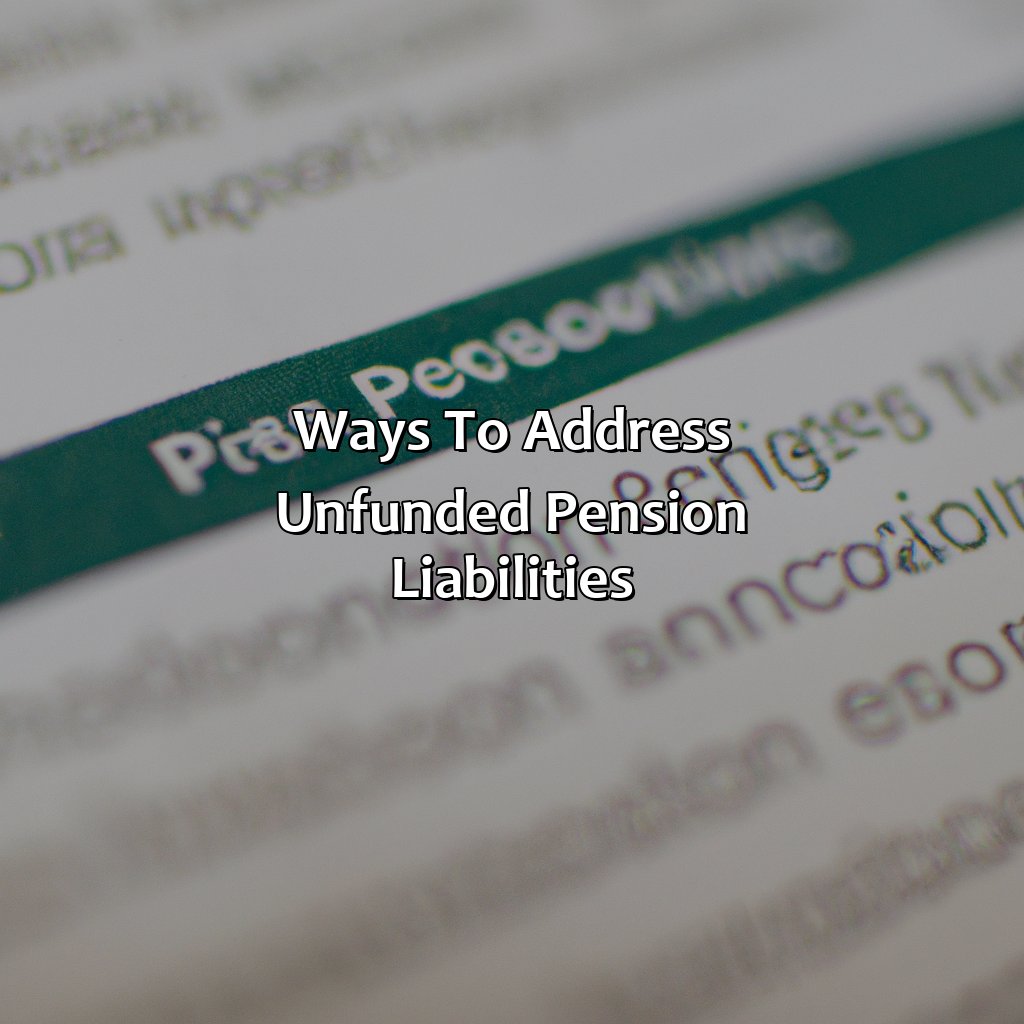
Image credits: retiregenz.com by David Duncun
Pension reform
Efforts to rectify the issue of underfunded pension schemes have been ongoing for years. This problem often stems from poor fiscal planning or governmental mismanagement, resulting in deficits that the taxpayer must incur. Addressing pension reform thus requires careful economic and political consideration, as well as transparent decision-making concerning entities responsible for this crisis.
Many states in the USA are grappling with unfunded pensions, but some have been able to tackle this situation more effectively than others. While New Jersey and Illinois arguably have the largest liabilities, other states such as South Dakota, Wisconsin, and Oregon have made great strides by creating solvency plans that call for increased employer contributions, tax hikes and reduced pension benefits.
It is pertinent to mention that addressing the underfunded pension issue not only helps avoid financial collapse but also ensures a secure future for retirees. However, it is imperative to maintain a consistent approach when dealing with this situation instead of sporadic movements.
According to Bloomberg’s Public Pension 100 report released July 2021, collectively developed public pensions across America now hold over $5 trillion in assets.
Ready to gamble on high-growth assets to fix unfunded pensions? Just remember, what goes up, must come down…and take your retirement savings with it.
Investing in high-growth assets
One approach to cope with unfunded pension obligations is to invest in high-growth assets that generate sufficient returns. These assets are typically those that exhibit a higher rate of return, which helps combat the liabilities and ensures financial stability. Investing in high-growth assets also potentially provides diversification benefits to the portfolio.
One example to illustrate this point is the California State Teachers’ Retirement System (CalSTRS), which has been investing in private debt like mortgages, fixed income, and credit for a while now. They recently started investing in commercial real estate as well, with the hopes that it will produce future returns far above their current 7% target. This is just one example of many ways states can address unfunded pension liabilities.
In essence, investing in high-growth assets is an effective strategy employed by several US states such as Illinois and New Jersey with vast unfunded pension liabilities. It offers potential benefits such as diversification and combats future financial stress without compromising returns.
Five Facts About States with the Largest Unfunded Pension Liabilities:
- ✅ Illinois is the state with the highest unfunded pension liability, with an estimated $137 billion shortfall. (Source: The Pew Charitable Trusts)
- ✅ Other states with large unfunded pension liabilities include California, New York, Texas, and Pennsylvania. (Source: Forbes)
- ✅ The unfunded pension liabilities of US states and territories total over $1.28 trillion. (Source: Morningstar)
- ✅ Unfunded pension liabilities have contributed to credit downgrades for several states, making it more expensive for them to borrow money. (Source: The New York Times)
- ✅ Some states have implemented reforms to address their unfunded pension liabilities, such as increasing employee contributions and reducing benefits. (Source: The Center for State and Local Government Excellence)
FAQs about Which States Have The Largest Unfunded Pension Liabilities?
Which states have the largest unfunded pension liabilities?
According to recent data, the states with the largest unfunded pension liabilities are:
- Illinois – $137 billion
- California – $117 billion
- New York – $80.5 billion
- Texas – $63.3 billion
- Pennsylvania – $62.7 billion
- Ohio – $52.6 billion
What are unfunded pension liabilities?
Unfunded pension liabilities refer to the difference between the amount of money that a state has set aside to pay for retiree benefits and the amount of money that is actually needed to cover those benefits. If a state has not set aside enough money to cover its pension obligations, it has unfunded pension liabilities.
What causes unfunded pension liabilities?
Unfunded pension liabilities can be caused by a variety of factors. These can include poor investment returns, inadequate funding by the state, changes in retiree benefits, and an increasing number of retirees relative to active workers. In many cases, multiple factors come into play.
How do unfunded pension liabilities affect states?
Unfunded pension liabilities can have serious consequences for states. They can lead to higher taxes, reduced funding for public services, and diminished confidence in the state’s financial stability. Additionally, unfunded pension liabilities can put retirees at risk if the state is unable to fulfill its pension obligations.
What is being done to address unfunded pension liabilities?
States are using a variety of strategies to address unfunded pension liabilities. These can include increasing contributions to pension funds, reducing retiree benefits, raising retirement ages, and finding ways to generate higher investment returns. However, these efforts can be challenging and contentious, as they often require significant sacrifices from various stakeholders.
Can states declare bankruptcy to address unfunded pension liabilities?
No. While municipalities can declare bankruptcy and may use that process to address unfunded pension liabilities, states do not have the same option. Under federal law, states cannot declare bankruptcy.
